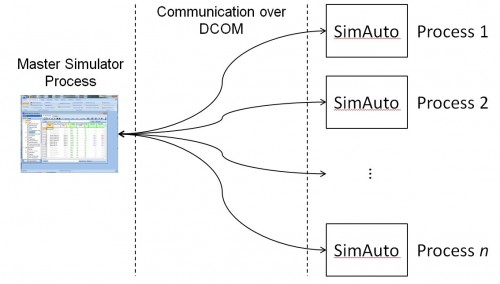Distributed Computing
PowerWorld has introduced with Simulator version 15 distributed computing technology to take advantage of modern multi-processor computers and network resources to reduce the computation time of some Simulator processes. The technology is suited for processes that are easily broken into smaller, independent tasks that may be processed in parallel. Contingency Analysis, multi-scenario ATC, and multi-contingency Transient Stability Analysis are currently available. We have plans to add QV analysis.
Highlights
- after initial setup, processing is transparent to the user;
- most parameters are stored in the registry of the master machine, so configuration of processors must be performed only once;
- testing and benchmarking suggest significant reduction in analysis time; actual reduction depends on the type of analysis, memory speed, the number of available processors, and whether processes are distributed to different cores of a multi-core processor or separate computers. (More details, courtesy of Bonneville Power Administration)
How it works
- A Master Simulator Process resides on the primary computer.
- Microsoft® Distributed COM accesses resources on other processors.
- A pool of SimAuto instances launches the independent processes.
- When each process is finished, the results are sent back to the Master Simulator Process.

Contingency Analysis Setup

Distributed computing features are available as a series of Add-ons to PowerWorld Simulator:
- Distributed Contingency Analysis
- Distributed ATC
- Distributed Transient Stability
- Distributed QV
A site license of Simulator SimAuto is also required for all Distributed Add-ons. Customers who have a site license of Simulator SimAuto may obtain Distributed Contingency Analysis at no additional cost.
